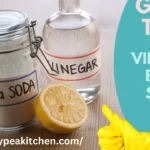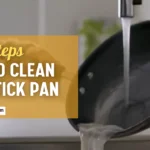Introduction
Plastic is a popular and versatile material for many products, but it can often accumulate dirt, dust and grime over time. Keeping your plastic clean is an important part of keeping it looking good and ensuring its longevity. Fortunately, there are several methods you can use to effectively clean plastic without causing any damage.
Cleaning plastic can be a daunting task, but with the right tools and techniques, your plastic can look like new in no time. To begin, you should always start by inspecting the surface of the plastic to determine if it is dirty or damaged. If there are any signs of dirt or damage, proceed with caution as abrasive cleaning methods may cause further damage to the item.
One of the simplest ways to clean plastic is with a damp cloth or sponge and a mild soap or detergent. This method works best on items such as toys, kitchenware, and other household items made from smooth plastic. Begin by lightly wetting the surface with warm water and then adding a few drops of mild soap or detergent directly onto the surface. Next, scrub gently in circular motions with your damp cloth or sponge until all dirt and grime is removed. Finally, rinse off the area with warm water before wiping dry with another cloth.
Overview of how to clean plastic
Inspect the item to determine if it is dirty or damaged. Wet the surface with warm water and add a few drops of mild soap or detergent directly onto the surface.
Scrub gently in circular motions until all dirt and grime are removed. Rinse off the area with warm water and wipe dry with another cloth.
By following these easy steps, you can easily clean plastic items around your home and keep them looking as good as new!
10 ways of how to clean plastic
1.Determine the type of plastic
Determine the type of plastic you are cleaning. Some types of plastic will react differently to certain cleaning methods, so it’s important to know what type of plastic you have before beginning. Some plastics may require specialized cleaning methods. Check the label to determine if it is safe to use water or a mild detergent on the item.
2.Clean with warm soapy water
Fill a sink or bucket with warm, soapy water and allow the plastic item to soak for some time. This will help to loosen the dirt and grime on the surface of the plastic. After soaking, scrub gently with a sponge or soft cloth and rinse off with clean water before drying thoroughly.
3.Use a baking soda paste
Create a baking soda paste by combining baking soda and water. Apply the paste onto the plastic item using a soft cloth or sponge in circular motions. Allow the mixture to sit on the surface before rinsing off with clean water and drying thoroughly.
4.Use vinegar
Vinegar is a natural cleaning agent that can help to remove stains and buildup from the surface of plastic items. To use, mix equal parts white vinegar and water and apply onto the surface using a soft cloth or sponge in circular motions. Allow the mixture to sit on the surface before rinsing off with clean water and drying thoroughly.
5.Use rubbing alcohol
Rubbing alcohol can be used to clean and disinfect plastic items such as toys, kitchenware, and other household items. To use, apply rubbing alcohol directly onto the surface and scrub gently with a soft cloth or sponge in circular motions. Allow the mixture to sit on the surface before rinsing off with clean water and drying thoroughly.
6.Use hydrogen peroxide
Hydrogen peroxide is an effective cleaning agent that can help to remove tough stains and buildup from the surface of plastic items. To use, mix equal parts hydrogen peroxide and water and apply onto the surface using a soft cloth or sponge in circular motions. Allow the mixture to sit on the surface before rinsing off with clean water and drying thoroughly.
7.Use bleach solution
Bleach can be used to clean plastic items such as toys, kitchenware, and other household items. To use, mix a solution of 1 part bleach and 10 parts water in a bucket or sink. Apply the mixture onto the surface using a soft cloth or sponge in circular motions. Allow the mixture to sit on the surface before rinsing off with clean water and drying thoroughly.
8.Use specialized plastic cleaners
There are specialized plastic cleaners available on the market that can help to remove tough stains and buildup from the surface of plastic items. To use, follow the instructions on the cleaner’s label and apply onto the surface using a soft cloth or sponge in circular motions. Allow the mixture to sit on the surface before rinsing off with clean water and drying thoroughly.
9.Wipe with a microfiber cloth
After cleaning plastic items, it is important to wipe them down with a microfiber cloth. This will help remove any remaining dirt and grime while also leaving behind a protective layer of wax on the surface. store your plastic items properly in order to keep them looking as good as new! Store away from heat and direct sunlight and in a dry area.
10.Protect the plastic from further damage
In order to protect the plastic from further damage, it is important to apply a protective layer of wax on the surface. This will help keep dirt and grime away and make cleaning easier in the future. Apply a thin layer of car wax or furniture paste wax onto the surface and buff with a soft cloth for best results.
Conclusion:
Cleaning plastic items requires a bit of patience and effort, but the results are well worth it. Follow these steps for best results and be sure to protect the plastic from further damage by applying a protective layer of wax after cleaning. With regular cleaning and maintenance, you’ll be able to keep your plastic items looking as good as new.



